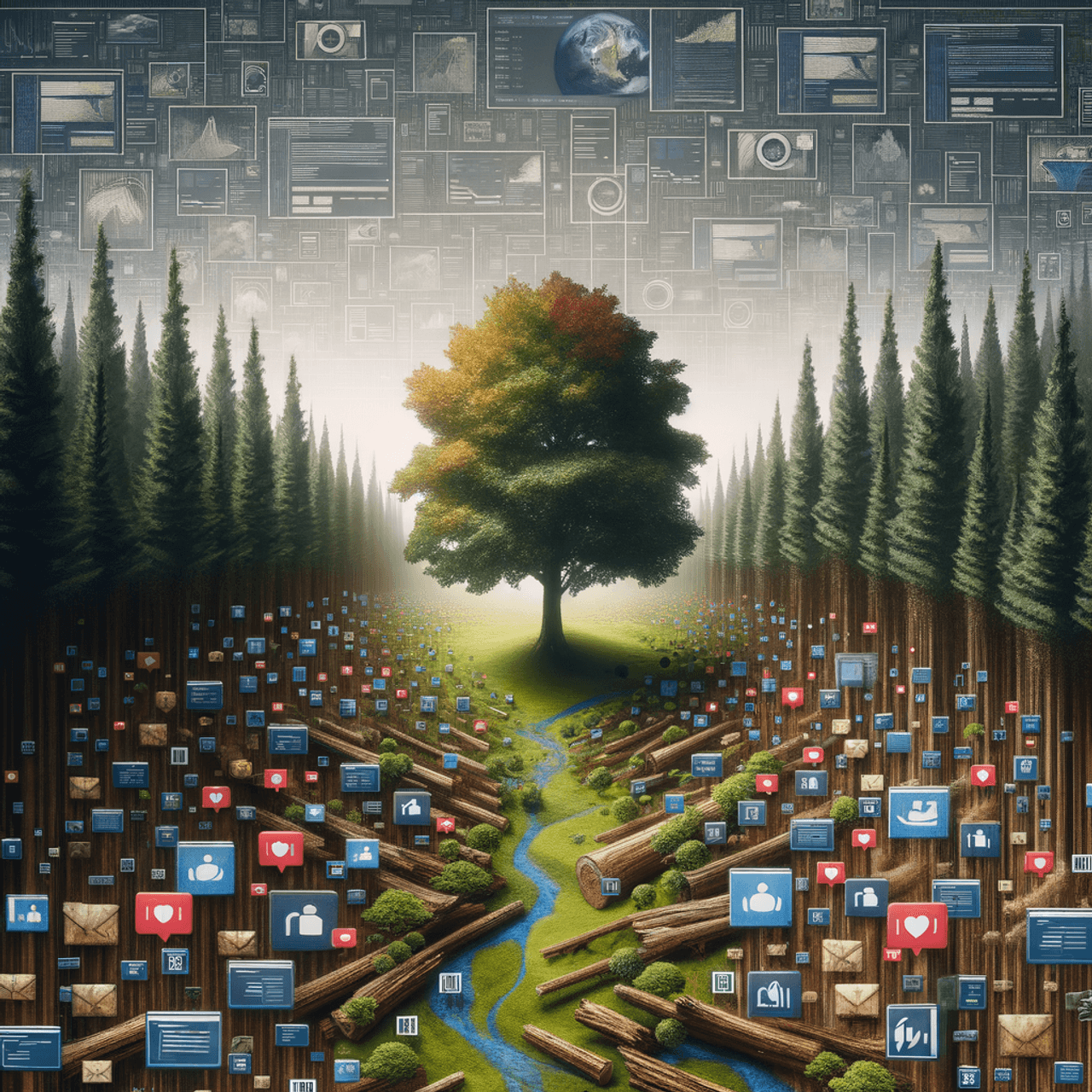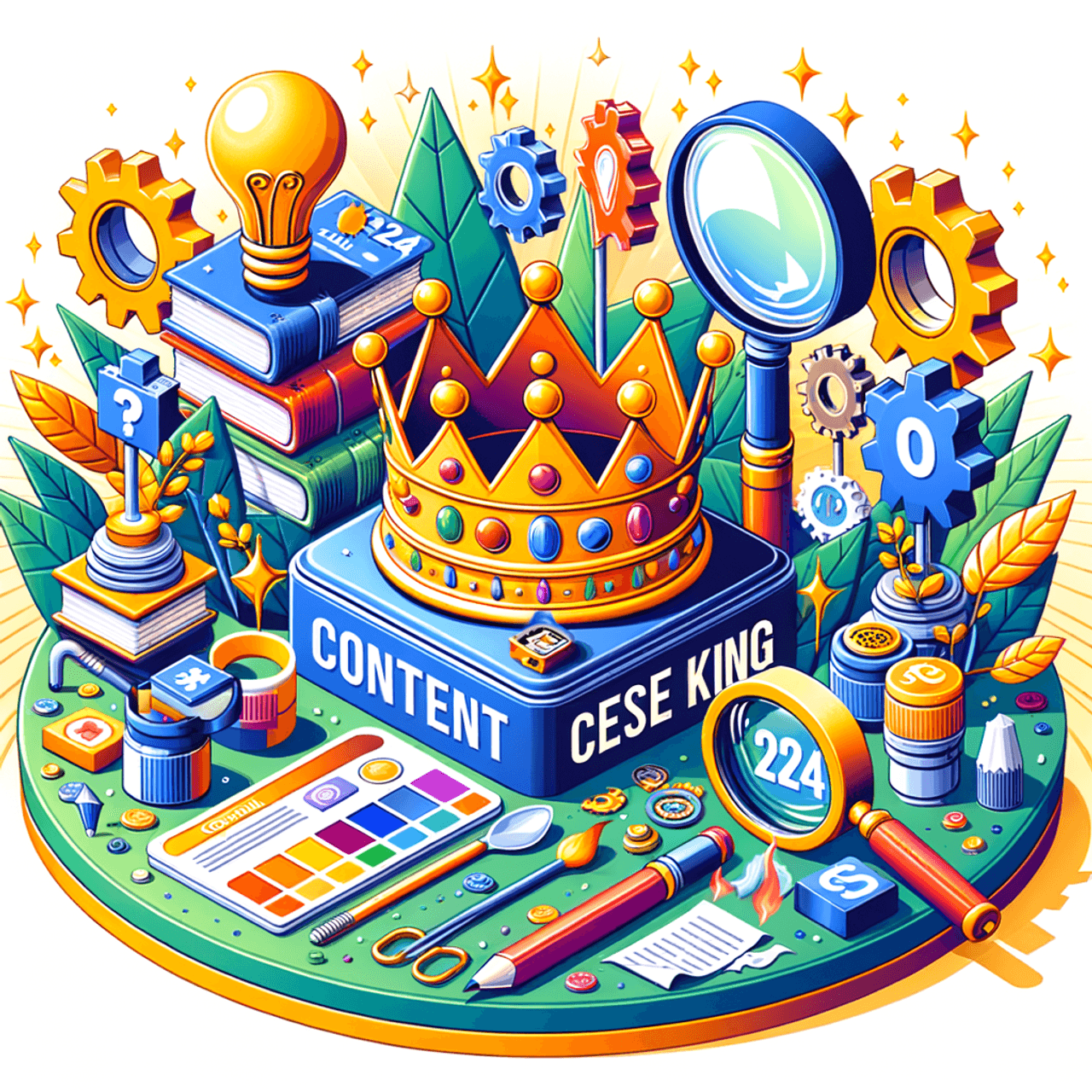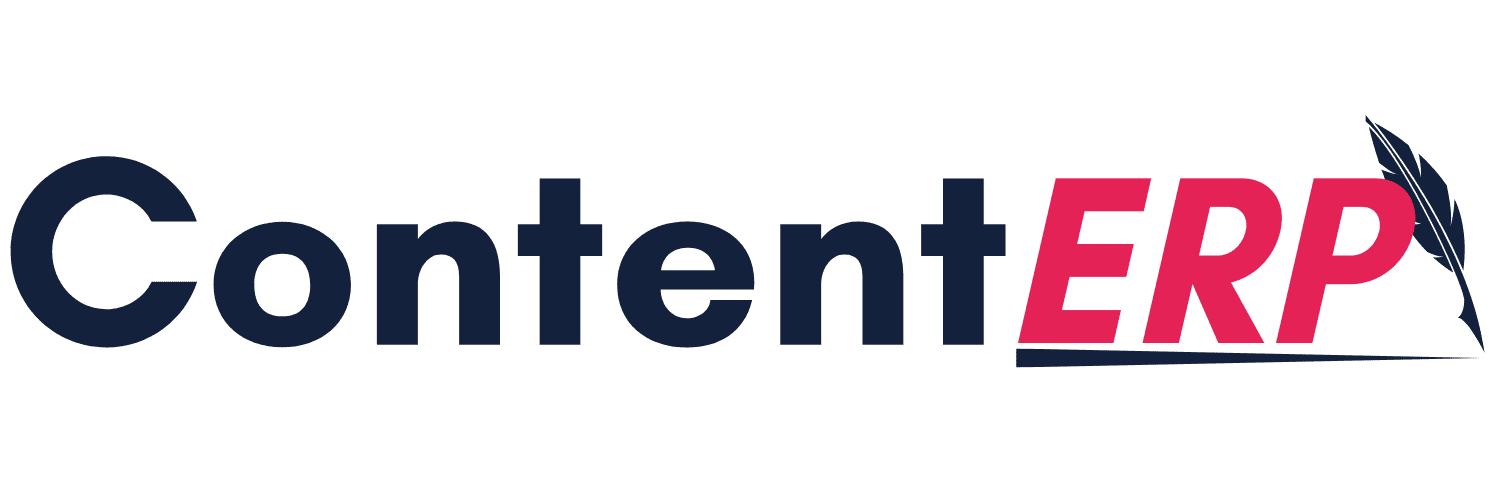by ContentERP | Oct 13, 2024 | Uncategorized
How to Create a Seamless Content Publishing Workflow
“A stitch in time saves nine.” This age-old proverb, typically meant to highlight the value of addressing small problems before they grow, serves as a fitting introduction to the world of content publishing. In the ever-evolving landscape of digital publishing, efficiency isn’t just about speed—it’s about creating systems that prevent chaos before it starts. The rise of digital publishing solutions has transformed the way content is created, managed, and delivered to audiences across the globe. However, without a seamless workflow, even the most advanced tools can quickly become liabilities.
For content creators, editors, and digital publishers, developing an integrated workflow is the equivalent of designing a well-oiled machine where every gear turns in harmony. One hiccup in the process, one missed deadline, or one miscommunication, and the whole operation can come to a screeching halt. But fear not—there are tried-and-true methods for creating a seamless content publishing workflow. This article will explore these methods, interweaving best practices, tools like ContentERP, and timeless wisdom to guide you through the process.

Mapping Out the Workflow: The Blueprint for Success
Before diving into the nitty-gritty of creating content, it’s critical to understand that a successful workflow begins with a well-defined plan. Imagine constructing a house. Would you lay bricks without blueprints? Similarly, your publishing workflow requires a solid framework.

Begin by mapping out every stage of your content journey—from ideation to publishing. This includes identifying key stakeholders, defining roles, setting deadlines, and ensuring that every piece of content passes through necessary quality checks. ContentERP, for instance, provides a structured system where these roles and responsibilities can be clearly outlined and tracked. Like a conductor leading an orchestra, ContentERP synchronizes the contributions of writers, designers, editors, and publishers, ensuring that the final product is pitch-perfect.
When establishing your workflow, ask yourself:
-
Who initiates the content ideas?
-
What’s the approval process?
-
How are edits and feedback incorporated?
-
Who has the final sign-off for publishing?
Having clear answers to these questions will prevent the kind of bottlenecks that can derail even the best digital publishing solutions. Once these stages are mapped out, digital publishers can breathe a sigh of relief, knowing that their content isn’t simply being produced—it’s moving forward with purpose and precision.
Streamlining Content Creation: The Heartbeat of Your Workflow
Content creation is the lifeblood of any publishing operation, but without proper management, it can become an unruly beast. A metaphor might help here: think of content creation like a river. If left unchecked, it can overflow its banks, creating confusion and disorder. But with the right systems in place, the river stays within its boundaries, flowing smoothly toward its destination.
One of the most effective ways to streamline content creation is to use content management platforms like ContentERP. These platforms provide a centralized hub where content drafts, revisions, and assets can be stored and shared. Rather than hunting through endless email threads or cloud folders, teams can access all the resources they need in one place. Collaboration becomes easier, and miscommunication—one of the greatest threats to efficiency—can be minimized.
ContentERP’s task assignment and tracking capabilities are particularly helpful for ensuring that every content piece progresses through the necessary steps. For example, once a draft is completed by a writer, the system automatically alerts the editor, who then provides feedback. The process is linear and logical, reducing the possibility of content slipping through the cracks. Additionally, having this streamlined system allows digital publishers to handle high volumes of content while maintaining quality, much like a masterful chef who balances numerous dishes without breaking a sweat.
Automation: The Unsung Hero of Workflow Efficiency
In today’s fast-paced digital world, manual processes can quickly become outdated. If you’re still manually updating editorial calendars or sending emails to check on progress, you’re leaving valuable time and resources on the table. Automation is the silver bullet in modern digital publishing workflows, capable of transforming a clunky system into a seamless operation.
Tools like ContentERP offer robust automation features that eliminate repetitive tasks. For instance, when an article is approved for publishing, it can automatically be sent to the next stage—whether that’s preparing for social media distribution or moving it into a content repository for future use. Automated workflows not only save time but also reduce the risk of human error. Like a car with cruise control, automation allows your workflow to maintain a steady pace while you focus on more strategic tasks.
Additionally, automation can extend to content performance tracking and reporting. Imagine receiving an automated report on how each piece of content performs across different platforms, without needing to manually gather data. This is not just a convenience—it’s a game-changer for digital publishers who are managing multiple content streams.
Quality Control: The Gatekeeper of Content Integrity
The digital publishing landscape is a crowded one, where quality often trumps quantity. It’s no longer enough to produce vast amounts of content; that content needs to be valuable, accurate, and engaging. However, when speed is of the essence, quality control can easily become an afterthought. This is why integrating a strong quality control process into your content workflow is essential.
To ensure that content meets your brand’s standards, it’s important to set up checkpoints at various stages of the workflow. This might include peer reviews, editorial checks, and final approval stages. A pun often rings true here: content creation without quality control is like a ship without a compass—it’s heading somewhere, but you can’t be sure it’s in the right direction.
ContentERP shines in this area by providing built-in review and approval workflows. Editors can leave detailed feedback, suggest revisions, and request rewrites, all within the platform. Moreover, using a single system for quality control prevents the classic game of telephone, where each person’s feedback dilutes the original message.
Communication: The Lifeblood of a Seamless Workflow

Communication is to your content workflow what oil is to an engine: without it, the entire system grinds to a halt. Effective communication ensures that every team member understands their role and stays in sync with the rest of the operation.
Digital publishers often work with large, geographically dispersed teams, making communication even more critical. The absence of face-to-face interaction means that instructions, feedback, and deadlines need to be crystal clear. One way to achieve this is through communication platforms integrated with your content workflow.
With ContentERP, real-time notifications and messaging features allow team members to stay connected no matter where they are. Personification works well here: consider your workflow as a living entity—if communication breaks down, it’s akin to cutting off its oxygen supply. Ensuring that information flows freely between team members guarantees that your content publishing machine continues to run smoothly.
Measuring Success: The Final Piece of the Puzzle
Once the content is published, the workflow doesn’t end—it evolves. Tracking and measuring the performance of your content is essential to refining your workflow for the future. This might involve looking at metrics such as engagement, time spent on page, or conversions. These insights will help digital publishers understand which pieces of content are resonating with audiences and which are falling flat.
To paraphrase a famous metaphor: data is the mirror in which your content’s success (or failure) is reflected. By integrating performance analytics into your workflow, you not only improve future content but also ensure that your workflow remains efficient and effective over time. ContentERP’s reporting tools provide an in-depth view of performance metrics, giving publishers the ability to refine their strategies based on real-world data.
Building a Future-Proof Workflow
Creating a seamless content publishing workflow in the digital age isn’t a luxury—it’s a necessity. As the digital publishing landscape grows more complex, having an integrated, streamlined process is the only way to keep up with demand while maintaining quality. With tools like ContentERP, digital publishers can automate tasks, ensure quality control, and enhance communication, all while managing multiple content streams.
As the renowned management consultant Peter Drucker once said, “Efficiency is doing things right; effectiveness is doing the right things.” By implementing a well-structured workflow, you can ensure that your content production is both efficient and effective—transforming your operation from a chaotic scramble to a harmonious symphony.
by ContentERP | Oct 13, 2024 | Uncategorized
Why Content Promotion is as Important as Content Creation
 In 1519, when Ferdinand Magellan set sail on his quest to circumnavigate the globe, he had everything a legendary explorer could need—courage, determination, and a crew ready to brave the unknown. But what if Magellan had never left port? What if his daring voyage remained a plan scrawled in the captain’s log, never to be realized? His vision, as ambitious as it was, would have been forgotten—another dream lost to time.
In 1519, when Ferdinand Magellan set sail on his quest to circumnavigate the globe, he had everything a legendary explorer could need—courage, determination, and a crew ready to brave the unknown. But what if Magellan had never left port? What if his daring voyage remained a plan scrawled in the captain’s log, never to be realized? His vision, as ambitious as it was, would have been forgotten—another dream lost to time.
Much like Magellan’s expedition, the greatest content in the world is useless if it never sees the light of day. As content creators, we often pour our energy into crafting the perfect blog post, video, or infographic, believing that our work will speak for itself. But the internet is a vast ocean of information, and without strategic content promotion, even the best creations can drown unnoticed.
So why is content promotion just as important as content creation? Because no matter how good your content is, if no one knows it exists, it’s as if it doesn’t. Let’s dive into why promoting your content is the key to ensuring that it reaches the right audience, amplifies your message, and fulfills its potential.
1. The Internet Is Crowded—Your Content Needs a Spotlight
“If a tree falls in a forest and no one is around to hear it, does it make a sound?”
This age-old philosophical question perfectly applies to the digital landscape. The internet is flooded with millions of new pieces of content daily. From blog posts and YouTube videos to podcasts and social media updates, there’s an endless stream of information vying for attention. In this noisy environment, creating high-quality content is not enough—it needs a spotlight to stand out.
Promotion is the megaphone that amplifies your content’s voice, allowing it to be heard above the noise. A brilliant article, no matter how insightful, can easily get lost if it isn’t shared, repurposed, or promoted on the right platforms. Through targeted promotion strategies—such as social media, email marketing, and influencer collaborations—you give your content the visibility it needs to make an impact.
In the same way that Magellan’s voyage would have been meaningless without the journey itself, content creation without promotion is a half-finished endeavor. You must set sail and chart the course that will bring your content to the audience it was meant for.
2. Content Creation and Promotion Work in Harmony
“It takes two to tango.”
The relationship between content creation and promotion is symbiotic—they rely on each other for success. Just as content creation lays the foundation for your brand’s message, promotion ensures that message is delivered to the right people. Without promotion, even the most expertly crafted content has no way to generate engagement, traffic, or conversions. On the other hand, promoting poor-quality content will only serve to highlight its flaws.
In 2023, the most effective marketing strategies integrate both creation and promotion from the start. Think of it like designing a skyscraper. You wouldn’t build the structure and then figure out how to get people inside—it’s planned together. The same should be true for your content marketing strategy. When you create content with promotion in mind, you optimize it for sharing, engaging, and reaching new audiences.
Tools like ContentERP simplify this integration. ContentERP allows you to plan, create, and promote content seamlessly, ensuring that your promotional strategy is baked into the creation process. By aligning your creation and promotion efforts, you’ll build content that doesn’t just exist but thrives in the digital world.
3. Promotion Fuels Engagement and Drives Traffic
“A car without gas isn’t going anywhere.”
Imagine spending days crafting a beautiful blog post, only for it to attract a handful of readers. It’s like driving a car that’s out of gas—you might have all the power under the hood, but without fuel, you’re not moving forward. Content promotion is the fuel that powers your content’s journey across the web.
 By sharing your content across multiple platforms—social media, email newsletters, guest posts, and influencer partnerships—you increase its reach and expose it to new audiences. But the benefits don’t stop there. Effective promotion strategies encourage audience engagement, driving comments, shares, and discussions that further amplify your message.
By sharing your content across multiple platforms—social media, email newsletters, guest posts, and influencer partnerships—you increase its reach and expose it to new audiences. But the benefits don’t stop there. Effective promotion strategies encourage audience engagement, driving comments, shares, and discussions that further amplify your message.
The more engagement your content receives, the more it signals to search engines that it’s valuable, which can boost its ranking in search results. This virtuous cycle begins with promotion—without it, your content may never gain the traction it deserves.
4. Your Content Lives Longer When You Promote It
“Don’t put all your eggs in one basket.”
One of the biggest mistakes content creators make is focusing on one-off promotions. They create a piece of content, share it once, and then move on. But content has a much longer shelf life than most people realize—if it’s promoted consistently.
Repurposing content is one of the most effective ways to extend its reach and lifespan. A well-researched blog post can be transformed into a series of social media posts, an infographic, a podcast episode, or even a video tutorial. Each new format attracts a different audience, breathing new life into the same core message.
ContentERP simplifies this process by allowing you to schedule and manage promotions across multiple channels. With the right promotional strategy, your content can continue to drive traffic and engagement long after its initial publication. In this way, promotion becomes not just a step but an ongoing process that keeps your content relevant and visible over time.
5. Promotion Builds Brand Authority and Trust
“Rome wasn’t built in a day.”
Becoming an authority in your niche takes time and consistency, and content promotion is a key part of that journey. The more your content is seen, shared, and engaged with, the more your audience will view you as a trusted source of information. But trust isn’t earned overnight—it’s the result of regularly delivering valuable content and promoting it effectively.
When you promote high-quality content, you position your brand as an expert in your industry. Whether through guest posts on reputable sites, collaborations with influencers, or social media campaigns, strategic promotion increases your brand’s visibility and credibility. Over time, this builds a loyal audience that turns to you for answers, advice, and solutions.
Is Your Content Getting the Attention It Deserves?
 In 1519, Ferdinand Magellan didn’t just dream of sailing around the world—he acted on it. He navigated through unknown waters, overcame countless challenges, and ultimately changed history. In much the same way, content creators must do more than create—they must promote their work to ensure it reaches its full potential.
In 1519, Ferdinand Magellan didn’t just dream of sailing around the world—he acted on it. He navigated through unknown waters, overcame countless challenges, and ultimately changed history. In much the same way, content creators must do more than create—they must promote their work to ensure it reaches its full potential.
As you think about your next piece of content, ask yourself: Is my content getting the attention it deserves? The digital landscape is vast and ever-changing, but with a solid promotional strategy, your content can rise above the noise, reach new audiences, and achieve its intended impact.
So, are you ready to set sail and take your content to the next level?
by ContentERP | Oct 13, 2024 | Uncategorized
Best SEO Practices for Content Management in 2024
 When I was a child, I used to help my grandfather in his garden. He was a patient man, but there was one lesson he would repeat again and again: “You can’t just plant seeds and walk away. You have to tend to them, water them, make sure they get enough sunlight. Otherwise, they’ll never grow.” I didn’t understand the depth of his advice then, but as I grew older, it dawned on me that his gardening wisdom applied to so many areas of life—especially content creation in the digital world.
When I was a child, I used to help my grandfather in his garden. He was a patient man, but there was one lesson he would repeat again and again: “You can’t just plant seeds and walk away. You have to tend to them, water them, make sure they get enough sunlight. Otherwise, they’ll never grow.” I didn’t understand the depth of his advice then, but as I grew older, it dawned on me that his gardening wisdom applied to so many areas of life—especially content creation in the digital world.
In the vast garden of the internet, simply planting content isn’t enough. You need to nurture it, optimize it, and ensure it has the right conditions to thrive. That’s where SEO practices come in. Think of SEO as the sunlight and water that help your content grow, ensuring it reaches the right audience and achieves its full potential.
In 2024, SEO is more dynamic than ever. Search engines are smarter, algorithms are more complex, and user behavior is constantly evolving. To stay competitive, businesses must adopt the best SEO practices for managing content. Here, we explore five key strategies that will keep your content optimized and your audience engaged, with help from tools like ContentERP and SEO keyword generators.
1. The Art of Keyword Research: Planting the Right Seeds
Imagine you’re a chef preparing a dish for a dinner party. You wouldn’t randomly throw ingredients together and hope for the best. You’d carefully select the ingredients based on the preferences of your guests. In the same way, your content needs to be crafted with intention—starting with the right keywords.
Keyword research is the foundation of effective SEO. Without understanding what your audience is searching for, your content might never reach them. In 2024, keyword strategies need to be even more refined, focusing not only on volume but on search intent. Are users looking for information, making a purchase, or seeking a specific service? Understanding the “why” behind their search is just as important as the keywords themselves.
SEO tools like ContentERP offer built-in SEO keyword generators that take the guesswork out of this process. By analyzing user behavior and search trends, these tools help you identify the most relevant keywords, ensuring your content aligns with what your audience is actively seeking. It’s like planting the right seeds in the right soil, giving your content the best chance to grow and flourish.
2. High-Quality Content: The Fertile Soil of SEO
We’ve all heard the phrase, “Content is king.” But in 2024, it’s not just about producing content—it’s about producing high-quality content. Search engines are getting better at understanding context, meaning that keyword-stuffed, poorly-written articles will no longer suffice. To rank well, your content needs to provide real value to readers.
High-quality content is engaging, informative, and actionable. It answers questions, solves problems, and keeps the reader coming back for more. But creating this kind of content consistently can be challenging without a structured process. This is where ContentERP comes in, helping you manage the entire content lifecycle—from ideation to creation to promotion.
By using a platform that integrates both content creation and management, you can ensure that every piece you produce is optimized for SEO without sacrificing quality. ContentERP helps you craft content that not only ranks well but also resonates with your audience, creating a long-lasting impact.
3. On-Page SEO: Tending to the Details
In gardening, it’s not enough to simply plant seeds and water them. You need to make sure they have the right spacing, that weeds aren’t choking them, and that they’re getting the right nutrients. Similarly, your content needs careful attention to detail in the form of on-page SEO.
 On-page SEO refers to the optimization of individual pages to rank higher and attract more relevant traffic. This includes things like optimizing meta tags, using header tags effectively, and ensuring that images are properly tagged with alt text. It’s the fine-tuning that makes all the difference in how search engines perceive your content.
On-page SEO refers to the optimization of individual pages to rank higher and attract more relevant traffic. This includes things like optimizing meta tags, using header tags effectively, and ensuring that images are properly tagged with alt text. It’s the fine-tuning that makes all the difference in how search engines perceive your content.
One of the best ways to ensure you’re covering all your bases is by using SEO tools like ContentERP’s optimization features. These tools guide you through the process of ensuring that each piece of content is fully optimized, from including targeted keywords in the right places to improving page load times. By tending to these small but crucial details, you give your content the best chance to thrive in search rankings.
4. Mobile Optimization: Reaching Audiences On-the-Go
In 2024, more users are accessing the internet through mobile devices than ever before. If your content isn’t optimized for mobile, you’re missing out on a massive portion of your audience. Think of mobile optimization as ensuring your content can thrive in any environment, much like a plant that can adapt to both sun and shade.
Mobile optimization goes beyond just having a responsive website design. It means ensuring that your content is easily readable on smaller screens, that images load quickly, and that navigation is intuitive. Google now prioritizes mobile-friendly websites in its rankings, so if your content isn’t optimized for mobile, it’s likely being penalized.
Tools like ContentERP can help you manage your content’s mobile performance by providing insights into how your site functions across different devices. By testing your content’s mobile readiness, you can ensure that your audience gets the best experience, whether they’re viewing it on a desktop, tablet, or smartphone.
5. Link Building: Connecting the Roots
In any ecosystem, plants don’t grow in isolation. They’re connected through networks of roots, sharing nutrients and supporting one another. In the same way, content doesn’t exist in a vacuum—it thrives when it’s linked to other relevant, authoritative content. This is the essence of link building.
Building both internal and external links is a critical part of any SEO strategy. Internal links help guide users through your site, improving navigation and increasing time spent on your pages. External links, on the other hand, signal to search engines that your content is credible and connected to a broader network of knowledge.
In 2024, the focus on high-quality backlinks remains essential. But it’s not just about quantity—it’s about earning links from reputable sources that enhance the authority of your content. ContentERP simplifies the link-building process by allowing you to track and manage links across your content, ensuring that your content is not only well-connected but also seen as valuable by search engines.
The Parable of the Bamboo Tree
 There’s a famous parable about the bamboo tree. In its first few years, the bamboo plant shows little to no visible growth. Day after day, the gardener waters it, tends to it, and waits. But below the surface, the bamboo’s roots are growing deep and strong. Then, one day, seemingly overnight, the bamboo shoots up, growing several feet in just a short time.
There’s a famous parable about the bamboo tree. In its first few years, the bamboo plant shows little to no visible growth. Day after day, the gardener waters it, tends to it, and waits. But below the surface, the bamboo’s roots are growing deep and strong. Then, one day, seemingly overnight, the bamboo shoots up, growing several feet in just a short time.
SEO is much like tending to a bamboo tree. At first, the growth may seem slow, and the results may not be immediately visible. But with consistent effort—strategic keyword research, high-quality content, on-page SEO, mobile optimization, and link building—the roots of your content grow deeper, stronger, and more connected. And when the time is right, that growth will be exponential.
Are you ready to build a sustainable, long-lasting SEO strategy for 2024? Sign up for ContentERP today and start nurturing your content with the right tools and strategies to ensure it reaches its full potential. Because in the garden of the internet, only the well-tended content will truly thrive.
by ContentERP | Oct 13, 2024 | Uncategorized
How to Build a Content Creation Process that Saves Time and Money
 I once knew a carpenter named Manuel. He was a craftsman of the old school—a perfectionist. He would spend hours measuring, cutting, sanding, and polishing a single piece of furniture until it gleamed like a work of art. His pieces were undeniably beautiful, but the time he spent on each one meant that his business was constantly behind on orders. Customers loved his work, but Manuel’s shop never grew, and his profits were meager. His attention to detail, while admirable, had become his biggest bottleneck.
I once knew a carpenter named Manuel. He was a craftsman of the old school—a perfectionist. He would spend hours measuring, cutting, sanding, and polishing a single piece of furniture until it gleamed like a work of art. His pieces were undeniably beautiful, but the time he spent on each one meant that his business was constantly behind on orders. Customers loved his work, but Manuel’s shop never grew, and his profits were meager. His attention to detail, while admirable, had become his biggest bottleneck.
One day, a friend gifted him a set of power tools. Reluctantly, Manuel tried them, afraid the quality would suffer. To his surprise, the new tools allowed him to achieve the same precision but in half the time. His production skyrocketed, quality remained high, and soon, Manuel’s shop was flourishing.
In the world of content creation, many businesses find themselves in Manuel’s shoes—pouring immense time and effort into every piece of content, only to fall behind on deadlines and stretch their budgets too thin. The solution? Building a content creation process that saves time and money without sacrificing quality.
Just as Manuel found his efficiency with the right tools, businesses can streamline their content creation process by incorporating smart strategies and modern tools. Here’s how to build a process that maximizes efficiency, reduces costs, and still delivers engaging, high-quality content.
1. Begin with a Strategic Content Plan
“Failing to plan is planning to fail,” the saying goes, and nowhere is this more evident than in content creation. Without a clear strategy, businesses often produce content haphazardly, leading to wasted time and resources. The key to saving time and money lies in creating a content plan that is both strategic and flexible.
 Before diving into creation, take the time to define your content goals. Are you looking to drive traffic, generate leads, or establish thought leadership? Once your goals are clear, identify your target audience and map out the types of content that will resonate with them. A content calendar will serve as your roadmap, allowing you to schedule content in advance and avoid the last-minute rush.
Before diving into creation, take the time to define your content goals. Are you looking to drive traffic, generate leads, or establish thought leadership? Once your goals are clear, identify your target audience and map out the types of content that will resonate with them. A content calendar will serve as your roadmap, allowing you to schedule content in advance and avoid the last-minute rush.
Tools like ContentERP make this process seamless. Its built-in content planner allows you to organize your entire content strategy in one place—whether it’s blog posts, social media updates, or video content. By mapping out content creation weeks or even months in advance, you ensure that every piece has a purpose and that no time is wasted on irrelevant content.
2. Streamline the Creation Process with Templates
When creating content from scratch every time, it’s easy to fall into the trap of overthinking or reworking the same structure again and again. To save time and effort, create templates for the types of content you produce most frequently—whether it’s blog posts, newsletters, social media graphics, or white papers.
Templates act as a starting point, providing a structure that can be filled in with relevant information. This doesn’t mean sacrificing creativity; it means that the framework is already laid out, allowing your team to focus on the meat of the content. Think of templates as a chef’s recipe—the creative flair comes in the details, but the basic steps are already in place.
Content creation and management platforms like ContentERP allow you to store and manage these templates efficiently, ensuring consistency across all content while reducing the time spent on planning and formatting. By standardizing processes, your team can work faster and smarter.
3. Foster Collaboration with Clear Roles and Responsibilities
 Imagine an orchestra where every musician plays their part without knowing what the others are doing. Chaos, right? Content creation is no different. To save time and avoid confusion, every member of your content team should have a clear understanding of their role in the process.
Imagine an orchestra where every musician plays their part without knowing what the others are doing. Chaos, right? Content creation is no different. To save time and avoid confusion, every member of your content team should have a clear understanding of their role in the process.
This means defining who is responsible for ideation, drafting, editing, design, and publishing. When roles are clear, the process runs smoothly like a well-conducted symphony. No one steps on each other’s toes, and nothing slips through the cracks.
ContentERP’s collaboration features are designed for just this purpose. By centralizing all your content in one platform, team members can track the progress of each piece, leave comments, and assign tasks without endless email threads. Real-time updates ensure that everyone is on the same page, reducing unnecessary back-and-forth and speeding up the workflow.
4. Repurpose and Recycle Content
One of the most effective ways to save time and money in content creation is to repurpose content you’ve already created. Many businesses overlook this strategy, constantly chasing new ideas while failing to leverage the value of existing content.
For example, a long-form blog post can be broken down into a series of social media posts, an infographic, or even a podcast episode. A well-researched white paper can be repurposed as a video tutorial. Repurposing content not only saves time but also helps reinforce key messages across multiple platforms, reaching a wider audience.
ContentERP simplifies this process by allowing you to organize, store, and tag all your content assets in one place, making it easy to identify opportunities for repurposing. This approach maximizes the ROI of every piece of content you create, allowing you to do more with less.
5. Automate Repetitive Tasks
 Automation is the power tool of modern content marketing. Just as Manuel found that new tools allowed him to work faster without sacrificing quality, automation tools can do the same for your content creation process.
Automation is the power tool of modern content marketing. Just as Manuel found that new tools allowed him to work faster without sacrificing quality, automation tools can do the same for your content creation process.
Routine tasks like scheduling social media posts, sending email newsletters, or publishing blog articles can be automated, freeing up your team’s time to focus on more creative and strategic work. By automating these repetitive tasks, you ensure consistency while reducing the time spent on manual operations.
ContentERP offers automation features that streamline the publishing process across multiple platforms. You can schedule content weeks in advance, ensuring that it goes live at the optimal time without lifting a finger. With automation handling the grunt work, your team is free to focus on what they do best—creating great content.
6. Measure, Adjust, and Improve
Saving time and money doesn’t stop with the creation process. To truly maximize efficiency, you need to measure the performance of your content and make adjustments where necessary. After all, there’s no point in producing content if it doesn’t deliver results.
By tracking key metrics—such as traffic, engagement, and conversion rates—you can identify which types of content are resonating with your audience and which are falling flat. This allows you to refine your strategy, ensuring that future content is more targeted and effective.
ContentERP provides built-in analytics that offer deep insights into your content’s performance. By reviewing these metrics regularly, you can continuously improve your content creation process, saving time and resources in the long run.
Related: Top 5 Strategies for Maximizing the Impact of Your Content Marketing
Conclusion: The Parable of the Farmer and the Axe
 There’s an old parable about a farmer chopping down trees with a dull axe. He worked tirelessly for hours, but the more he chopped, the less effective his tool became. A neighbor suggested he take time to sharpen the axe, but the farmer refused, claiming he didn’t have time to stop. Eventually, exhausted and frustrated, the farmer realized that his haste had cost him far more time and energy than if he’d just taken a moment to sharpen the axe in the first place.
There’s an old parable about a farmer chopping down trees with a dull axe. He worked tirelessly for hours, but the more he chopped, the less effective his tool became. A neighbor suggested he take time to sharpen the axe, but the farmer refused, claiming he didn’t have time to stop. Eventually, exhausted and frustrated, the farmer realized that his haste had cost him far more time and energy than if he’d just taken a moment to sharpen the axe in the first place.
In the world of content marketing, many businesses fall into the same trap. They rush through the content creation process, trying to produce as much content as possible, only to find that inefficiencies drain their time and budgets. By taking the time to sharpen your process—planning strategically, using the right tools, automating repetitive tasks, and measuring performance—you can save time, reduce costs, and ultimately produce higher-quality content.
So, are you ready to sharpen your content creation process? Sign up for ContentERP today, and watch how seamlessly you can plan, create, and manage your content—turning chaos into clarity, and effort into results.
by ContentERP | Oct 13, 2024 | Uncategorized
How to Plan, Create, and Promote Content with One Tool
 I’ll never forget the first time I experienced culture shock in Mexico. I was walking through a busy market in Mexico City, marveling at the vibrant colors, the delicious smell of freshly made tortillas, and the lively chatter. But then, I saw something I wasn’t prepared for—a group of vendors loudly competing for customers, each one shouting out their deals with a kind of urgency I’d never encountered. It wasn’t the peaceful bartering I expected; it was a beautiful, chaotic orchestra of voices, all demanding attention at once. This was marketing, Mexican-style: bold, unapologetic, and effective.
I’ll never forget the first time I experienced culture shock in Mexico. I was walking through a busy market in Mexico City, marveling at the vibrant colors, the delicious smell of freshly made tortillas, and the lively chatter. But then, I saw something I wasn’t prepared for—a group of vendors loudly competing for customers, each one shouting out their deals with a kind of urgency I’d never encountered. It wasn’t the peaceful bartering I expected; it was a beautiful, chaotic orchestra of voices, all demanding attention at once. This was marketing, Mexican-style: bold, unapologetic, and effective.
In many ways, content marketing in the digital space mirrors this experience. The internet is a crowded market where everyone is vying for attention. But here’s the difference: without the right tools and strategy, your voice risks being lost in the din. How can you ensure your message stands out in today’s fast-paced digital world, where content is king? How can you plan, create, and promote content effectively without feeling overwhelmed?
Enter ContentERP, a tool that simplifies the entire content marketing process—from ideation to execution. Let’s explore how this powerful platform can help you manage every aspect of your content marketing strategy, ensuring that your voice is heard in the crowded marketplace of the internet.
1. Planning Your Content: Laying the Foundation
 “Good content is planned, not spontaneous.”
“Good content is planned, not spontaneous.”
Content marketing in digital marketing requires a solid foundation, and that begins with careful planning. But for many businesses, planning content can feel like trying to assemble a puzzle without seeing the full picture. You’ve got blog posts, social media updates, email campaigns—all moving parts that need to be orchestrated into one cohesive strategy.
With ContentERP, its intuitive content calendar allows you to map out every piece of content you plan to produce, ensuring that each post, article, or update is part of a larger, well-coordinated strategy. Whether you’re launching a new product or preparing for a seasonal campaign, ContentERP’s calendar helps you keep your goals in sight and your deadlines under control.
Think of ContentERP’s planning features as a master chef organizing the ingredients before the cooking begins. Every task is laid out in advance, every deadline is clear, and every team member knows their role. By centralizing the planning process, you eliminate the chaos of last-minute scrambling, ensuring that every piece of content has a purpose and a timeline.
2. Creating Content: Crafting with Ease and Precision
 “The hardest part of content creation isn’t the idea—it’s the execution.”
“The hardest part of content creation isn’t the idea—it’s the execution.”
Once your content is planned, the next step is the actual creation. This is where the magic happens, but it’s also where things can go off the rails. Drafts get lost in endless email chains, multiple versions of the same document circulate, and feedback becomes a muddled mess. Without a streamlined workflow, creating content can feel like trying to juggle too many balls at once.
ContentERP transforms the content creation process into a well-oiled machine. Writers can draft articles, blog posts, and social media updates directly within the platform, sharing them with editors and other team members for real-time feedback. Gone are the days of sifting through email threads to find the latest version of a draft. ContentERP centralizes all content in one place, allowing for seamless collaboration between writers, designers, and editors.
The platform also offers SEO tools that guide you through the content creation process, ensuring that every piece of content is optimized for search engines. It’s like having an SEO expert on standby, making sure that every article you create is designed to rank high in search results.
3. Promoting Content: Shouting from the Digital Rooftops
 “What good is great content if no one sees it?”
“What good is great content if no one sees it?”
Creating great content is only half the battle. Once your content is live, it’s time to make sure it gets noticed—and that’s where promotion comes in. In today’s digital marketplace, content promotion is not just a nice-to-have, it’s a necessity. You need to promote content effectively across channels to reach your target audience.
ContentERP simplifies content promotion by allowing you to distribute content across multiple platforms, from social media to email newsletters, all from one dashboard. Whether you’re sharing a blog post on LinkedIn or promoting a product launch on Instagram, ContentERP enables you to schedule and manage your promotions with ease.
Timing is everything when it comes to content promotion, and ContentERP ensures that your content is posted at the optimal time for maximum engagement. You can also track the performance of your content in real time, allowing you to adjust your strategy as needed. Think of it as having a digital marketing megaphone—your content gets the spotlight it deserves, and you can amplify your message without breaking a sweat.
4. Measuring Success: The Data Behind the Magic
 “The numbers never lie.”
“The numbers never lie.”
Content marketing isn’t a guessing game—it’s a data-driven process. To truly understand the impact of your content, you need to track its performance. Is your blog driving traffic to your website? Are your social media posts generating engagement? Without clear metrics, it’s impossible to know what’s working and what’s not.
ContentERP provides in-depth analytics that give you a clear picture of your content’s performance. From page views to social media shares, you can track every metric that matters, allowing you to refine your content strategy for better results. It’s like having a map that shows you where to go next, ensuring that every content decision is backed by data.
Conclusion: Turning Chaos into Clarity
 As I navigated the bustling market in Mexico City, I realized that the shouting vendors weren’t just competing for attention—they were masters of promotion, using every tool at their disposal to stand out. Similarly, in the digital world, it’s not enough to create great content. You need to promote it, amplify it, and ensure that your voice rises above the noise.
As I navigated the bustling market in Mexico City, I realized that the shouting vendors weren’t just competing for attention—they were masters of promotion, using every tool at their disposal to stand out. Similarly, in the digital world, it’s not enough to create great content. You need to promote it, amplify it, and ensure that your voice rises above the noise.
With ContentERP, the entire content marketing process—from planning to creation to promotion—becomes seamless. It’s the tool that helps you organize your efforts, collaborate effectively, and measure success, all in one place. The chaos of juggling multiple platforms and deadlines fades away, leaving you with clarity, control, and confidence.
As the Mexican saying goes, “Camarón que se duerme, se lo lleva la corriente”—the shrimp that falls asleep is carried away by the current. In content marketing, those who fail to plan, create, and promote their content effectively risk being swept away in the sea of digital noise. Don’t let that be you.
Sign up for ContentERP today, and take control of your content marketing strategy. Your voice deserves to be heard.
by ContentERP | Oct 13, 2024 | Uncategorized
How to Organize Your Content Team for Maximum Efficiency
 Imagine stepping into the kitchen of a Michelin-starred restaurant. The chefs are moving in perfect harmony—chopping, stirring, plating—with each person knowing exactly what they need to do and when. There’s no wasted effort, no confusion, and certainly no overlapping roles. The result? A culinary masterpiece delivered with precision and flair.
Imagine stepping into the kitchen of a Michelin-starred restaurant. The chefs are moving in perfect harmony—chopping, stirring, plating—with each person knowing exactly what they need to do and when. There’s no wasted effort, no confusion, and certainly no overlapping roles. The result? A culinary masterpiece delivered with precision and flair.
Now, imagine if your content team could operate like that kitchen, where each role is clearly defined, collaboration is seamless, and every task is completed efficiently. In a world where content is king, how do you ensure that your team is working at maximum efficiency to create, refine, and promote content that truly resonates?
Much like in that well-oiled kitchen, the secret lies in organization. When you set up clear content team roles, establish workflows, and provide the right tools, your team becomes a cohesive force—producing quality content on time, every time. With platforms like ContentERP to help streamline the process, organizing your content team has never been more achievable.
1. Define Clear Roles and Responsibilities
In the content world, ambiguity is the enemy of efficiency. Without well-defined roles, tasks overlap, deadlines get missed, and creativity can get stifled. Just as each chef in the kitchen has a specific job, from head chef to sous chef, your content team needs clear definitions of responsibility.
Start by breaking down the core content team roles:
-
Content Strategist: The architect of the team, responsible for setting the overall content strategy, defining goals, and ensuring that every piece of content aligns with the broader vision.
-
Writers: The wordsmiths who craft the articles, blogs, and copy that fuel your content marketing efforts. Their primary focus is on producing engaging, well-researched, and SEO-optimized content.
-
Editors: The quality control experts who refine and polish content, ensuring consistency in tone, grammar, and style.
-
SEO Specialists: The detectives of the team, researching keywords, tracking search trends, and optimizing content for search engines to ensure it gets found.
-
Designers: The visual storytellers, responsible for creating infographics, images, and other visual assets that make content more engaging.
-
Content Manager: The conductor who ensures that each team member knows their part and that every piece of content moves smoothly through the pipeline.
By clearly defining each role, you ensure that every team member knows what’s expected of them, minimizing confusion and preventing duplicated effort. When roles are clear, it’s easier for your team to collaborate and stay on track.
2. Streamline Workflow with a Content Calendar
Once you’ve established clear roles, the next step is organizing the workflow. Content creation is a multifaceted process that involves brainstorming, drafting, editing, and promotion. Without a system in place to manage it all, projects can easily fall behind or get lost in the shuffle.
A content calendar is your roadmap. It not only sets deadlines but also allows you to see the bigger picture—ensuring that your content production aligns with your marketing goals. ContentERP offers an intuitive content calendar that can be customized to your team’s needs. Whether you’re planning weekly blog posts, monthly newsletters, or quarterly white papers, the calendar provides visibility across the entire content cycle.
Imagine it like setting up a production line in a factory. Each piece of content moves through stages—from ideation to drafting to editing—until it’s polished and ready for publication. With a content calendar, every team member knows where a project stands and what needs to happen next.
3. Foster Collaboration Across Departments
 Content creation is not a one-person show. It involves writers, designers, SEO specialists, and managers all working together to produce a final product. For your content team to work at peak efficiency, seamless collaboration is essential. But how do you ensure that everyone stays on the same page?
Content creation is not a one-person show. It involves writers, designers, SEO specialists, and managers all working together to produce a final product. For your content team to work at peak efficiency, seamless collaboration is essential. But how do you ensure that everyone stays on the same page?
This is where ContentERP shines. By providing a unified platform, the tool fosters collaboration by allowing team members to share drafts, leave feedback, and track changes in real-time. No more juggling endless email chains or losing track of feedback. Everyone can see the latest version of a document and knows who’s responsible for the next step in the process.
It’s like a relay race where the baton is passed seamlessly from one runner to the next. Each team member contributes their expertise at the right moment, ensuring that the content keeps moving forward without unnecessary delays.
4. Automate Tedious Tasks
No one enjoys getting bogged down with repetitive tasks like scheduling social media posts or sending reminders about upcoming deadlines. Automation is the key to freeing up your team’s creative energy and keeping them focused on higher-level work.
ContentERP offers a range of automation features designed to eliminate these time-consuming tasks. For example, you can automate the scheduling of social media posts across multiple platforms, ensuring your content reaches your audience at the optimal time without manual input. You can also set up automated reminders for team members when a deadline is approaching or a task needs attention.
Think of automation as your sous chef, quietly handling the mundane tasks in the background so your team can focus on delivering the perfect content recipe.
5. Track Performance and Continuously Improve
How do you know if your content is working? Without tracking performance, it’s impossible to understand whether your content is engaging your audience, driving traffic, or meeting your business goals. Efficient content teams don’t just create—they analyze and improve.
ContentERP provides detailed analytics that gives you insight into how your content is performing. From engagement metrics to SEO rankings, these insights allow your team to see what’s working and where there’s room for improvement. By continuously refining your content strategy based on performance data, your team can ensure that each new piece of content is more effective than the last.
It’s like running a restaurant—each dish is critiqued, refined, and improved upon to ensure that your customers keep coming back for more.
A Harmonious Team, A Flawless Performance
 Picture your content team as an orchestra. When every musician knows their role and is playing in tune, the result is a powerful, harmonious performance. But if even one section is out of sync, the entire piece falls apart. In content creation, efficiency comes from alignment—when every role, every task, and every tool works together seamlessly.
Picture your content team as an orchestra. When every musician knows their role and is playing in tune, the result is a powerful, harmonious performance. But if even one section is out of sync, the entire piece falls apart. In content creation, efficiency comes from alignment—when every role, every task, and every tool works together seamlessly.
Organizing your content team isn’t just about assigning roles and setting deadlines. It’s about creating an environment where creativity thrives, collaboration is second nature, and results are measurable. With the right structure and tools like ContentERP, your team can produce high-quality content efficiently, allowing your business to engage audiences, grow brand awareness, and drive results.
As a famous Japanese saying goes, “None of us is as smart as all of us.” With the right team organization and tools, your content team can become a cohesive, efficient force—delivering exceptional content every time.
So, are you ready to streamline your content process? Sign up for ContentERP today, and watch your content team transform into a high-performing powerhouse. The results won’t just speak for themselves—they’ll sing.


 I’ll never forget the first time I experienced culture shock in Mexico. I was walking through a busy market in Mexico City, marveling at the vibrant colors, the delicious smell of freshly made tortillas, and the lively chatter. But then, I saw something I wasn’t prepared for—a group of vendors loudly competing for customers, each one shouting out their deals with a kind of urgency I’d never encountered. It wasn’t the peaceful bartering I expected; it was a beautiful, chaotic orchestra of voices, all demanding attention at once. This was marketing, Mexican-style: bold, unapologetic, and effective.
I’ll never forget the first time I experienced culture shock in Mexico. I was walking through a busy market in Mexico City, marveling at the vibrant colors, the delicious smell of freshly made tortillas, and the lively chatter. But then, I saw something I wasn’t prepared for—a group of vendors loudly competing for customers, each one shouting out their deals with a kind of urgency I’d never encountered. It wasn’t the peaceful bartering I expected; it was a beautiful, chaotic orchestra of voices, all demanding attention at once. This was marketing, Mexican-style: bold, unapologetic, and effective. “Good content is planned, not spontaneous.”
“Good content is planned, not spontaneous.” “The hardest part of content creation isn’t the idea—it’s the execution.”
“The hardest part of content creation isn’t the idea—it’s the execution.” “What good is great content if no one sees it?”
“What good is great content if no one sees it?” “The numbers never lie.”
“The numbers never lie.”